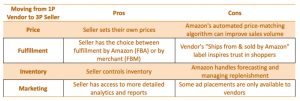— January 26, 2018

Making decisions in business is a challenge. Financial viability, ethical concerns and more can come into play. From the simplest to the most complex, from the trivial to the critical, decisions are based on an analysis and weighing of available information. And there, today, is the rub. We have acdess to infinite amounts of data, available with the click of a key. And in plowing through available information, one thing becomes clear: that all data is subject to bias.
Some bias is by omission. Product advertisements unabashedly tout the benefits of their product and are silent on less desirable qualities. A hamburger may be supersized with exotic toppings, but the ads won’t mention the preservatives or high sodium content. A vendor promoting a new machine might promote its speed and affordability, but neglect to mention its abysmal repair record.
Polls and statistics are notorious for potential bias. Numbers can be generated to support almost any claim, depending on the population selected, the wording of the questions and an infinite range of other factors.
In our everyday life, spin is everywhere, and spin can blatantly misdirect the truth. Quotations out of context, wildly unflattering pictures, and outrageous lies asserted with conviction can be promoted and become accepted as an accurate view of reality.
The purpose of spin is manipulation. The goal is to influence decisions in a direction which may or may not be in your best interests, or the best interests of your organizaton, but which is in the best interest of the entity providing the data. Yet the information available, as biased as it may be, is all we have to guide our decisions. So how do we go about making decisions in spin city?
Making Decisions: Seeing Through Spin
In evaluating your sources, consider the following:
- What’s in it for them? Your data source has an agenda; be aware of this. The salesman may offer you a great upgrade at an introductory price. You may not need the upgrade but they may need the sale to meet their monthly quota.
- Is the information validated? Do unrelated sources support the information? Is there a coordinated conspiracy supporting a falsehood, and standing alone is a sole bearer of the unbiased truth? This is possible; what is the likelihood? Whether you are believing the one or the many, seriously consider the possible underlying motives. Weigh in with your own observations. An employee may deny a substance abuse problem reported by multiple co-workers; is this a vendetta or an effort to help?
- What does the source do with unpopular information? Do they report it accurately, distort it, or ignore it? A consultant who tells the CEO that morale across the board is in the tank is far more credible than one who focuses on the 5% of employees who are “satisfied.”
- Is there redirection? When an issue is raised, does the source respond with a distraction? An employee who is chronically late may cite another employee who is also late, or who takes long breaks, or leaves early.
- What is their track record? Is information from the source usually proven to be fairly accurate or wildly biased? Take past performance into consideration, but also be aware that indeed, the unreliable source will on rare occasion be on target.
- Is there an extreme emotional outburst? When challenged, is there outrage, bluster, fists pounded on tables, items thrown aside? Is there the angry red face, the pointed finger, the vocabulary meant to shock? Or is there the quivering lower lip, the lowered eyes, the tears and sobs? The emotion may be real or staged; the effect, in either case, is manipulative.
The Bottom Line:
Making decisions in business is not straightforward. We are dealing with complex issues and complex human agendas. Spin is present in the words we use, in what is said and not said. A small vocal inflection or a casual gesture can totally change a message.
Spin is everywhere. It is an integral component of communication. Our challenge as business leaders is to recognize spin, evaluate it, and take it into account when formulating our decisions, opinions and perspectives.
Business & Finance Articles on Business 2 Community
(62)






